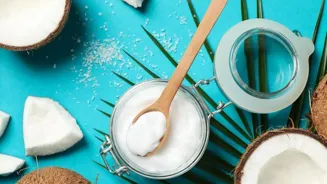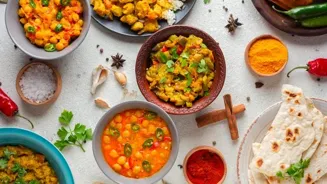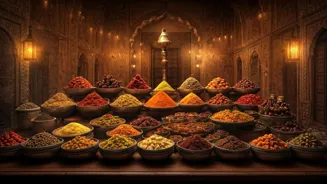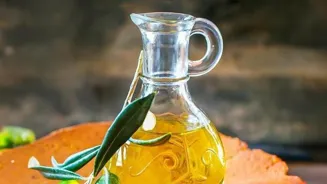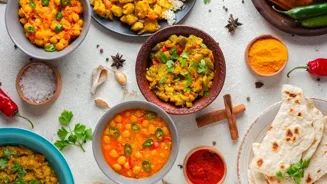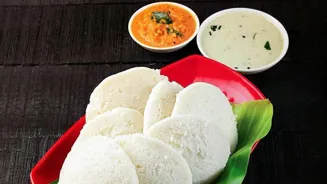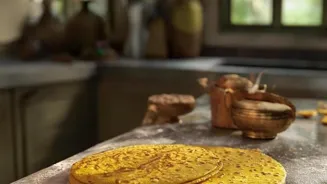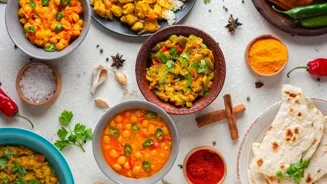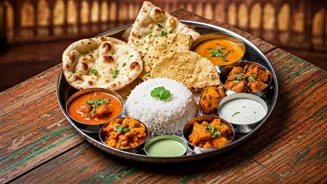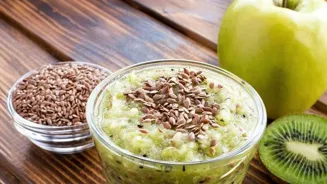Unlock the Versatility of Coconut in Indian Cooking! Dive into recipes and tips to elevate your dishes with this tropical gem
Coconut, or nariyal as we lovingly call it, is more than just a tropical fruit;
it's a culinary cornerstone in many Indian homes. From the sunny coastlines of Kerala to the bustling kitchens of Mumbai, coconut finds its way into a variety of dishes, adding a unique flavour and texture.
This article will dive deep into how you can use coconut in your Indian cooking, complete with easy recipes and helpful tips. Get ready to unlock the versatility of this amazing ingredient!
Coconut chutney elevates dishes with endless variations
Coconut truly shines when it comes to chutneys. Think about it – a simple coconut chutney can elevate a humble idli or dosa into a flavourful experience. The basic recipe usually involves fresh grated coconut, green chilies, ginger, and tempered spices like mustard seeds and curry leaves.
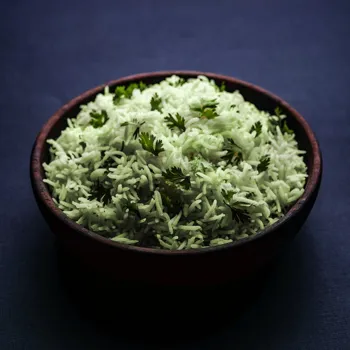
But the variations are endless! You can add roasted chana dal for a nutty taste, tamarind for a tangy kick, or even garlic for a bolder flavour. Pro tip: when grinding your chutney, add a little bit of water at a time to get the perfect consistency. No one likes a watery chutney!
And remember, fresh is best. While you can use dried coconut, fresh coconut will always give you a brighter, more vibrant flavour. With a bit of experimentation, you can create your own signature coconut chutney that your family will absolutely love.
Its cooling and refreshing, hence it makes a great side dish.
Coconut milk adds richness and flavor to vegetarian curries
Now, let's talk about curries! Coconut milk is a game-changer when it comes to adding richness and creaminess to vegetarian curries. Forget heavy cream; coconut milk is a lighter, healthier alternative. Plus it can be used in a lot of interesting dishes.
It is extensively used in South Indian curries like avial or vegetable stew. In avial coconut milk acts as a thickening agent and also provides the base flavour. It can be used in vegetable korma to add the rich creamy texture.
Moreover, it imparts a very refreshing taste to dishes, be it sweet or savory. You should try adding coconut milk to your usual vegetable recipes, it is an awesome way to enhance flavour. And you can tweak the spice level according to your taste.
Some people prefer the subtle flavour of thinly sliced coconut pieces which can be added. So experiment freely and discover new tastes.
South Indian desserts feature versatile coconut for flavor and texture, perfect for festivals
South India has more than one use for coconut. You will find it as part of desserts in some instances, and also a major component of many dishes. Take a look at the famous payasam, a sweet dessert made with rice, milk, and sugar, where coconut milk or grated coconut adds a lovely flavour.
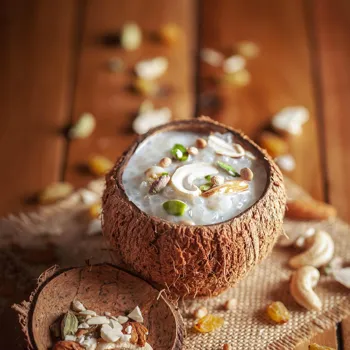
Then there is “thenga burfi” made with coconut . Thenga burfi is often prepared during festivals and is considered an auspicious dish. Adding coconut to desserts not only enhances the sweetness but also gives a pleasant texture.
Don't be afraid to experiment with different types of coconut – use desiccated coconut for a drier texture or fresh coconut for a more moist and juicy result. You can even toast the coconut for an extra nutty flavour.
With a sprinkle of cardamom or a touch of saffron, your coconut-infused desserts will be an instant hit.
Coconut enhances vegetable dishes with flavor and crunch
Let's move into the world of vegetables where coconut plays a crucial role. The very famous cabbage poriyal is made with shredded cabbage and grated coconut. This simple dish highlights the flavour of the cabbage with a hint of sweetness from the coconut.
Another classic way to cook with coconut is in vegetable stir-fries. Add grated coconut towards the end of cooking to retain its freshness and crunch. It pairs well with green beans, carrots, and even potatoes. The key is to not overcook the coconut, otherwise it could become mushy.
Use grated coconut as a topping for vegetable salads, a sprinkle of coconut can add a delightful twist to your regular salads. It gives the vegetable a nice flavor and mouth-feel. Vegetables are a healthy option and coconut helps to enhance the taste.
Tips for buying and storing fresh coconut properly
Now we can discuss about ways to buy and store coconut. If you are buying a whole coconut, shake it to ensure there is ample water inside, which indicates freshness. The eyes should be free from mold. To break a coconut easily you can heat them up a little.

Tap the middle of the coconut with a hammer or hard utensil. When you have coconut flakes left just store them in the fridge. It's best to use it within 3-4 days for optimal freshness.
Desiccated coconut, on the other hand, can be stored in an airtight container at room temperature for a longer duration. And always remember to check the expiry date. With a little care and attention, your coconut will be as fresh as the day you bought it!
Coconut oil enhances South Indian dishes, used for cooking
Coconut oil is another important product made from coconut, for cooking. In South India, it is frequently used for cooking. It lends a unique aroma and taste to dishes. For instance, it can be used to temper mustard seeds and curry leaves for sambar or rasam.
You can also use it for shallow frying vegetables or for making dosas and uttappams. While coconut oil is often associated with South Indian cuisine, don't hesitate to experiment with it in other dishes as well. However its strong flavor could be too overwhelming for some dishe.
It is also considered to be a healthy oil and can be used as an alternative to refined oils for cooking.
AI Generated Content. Glance/InMobi shall have no liability for the content